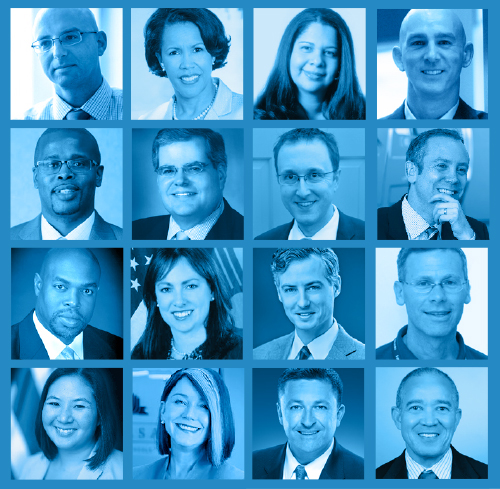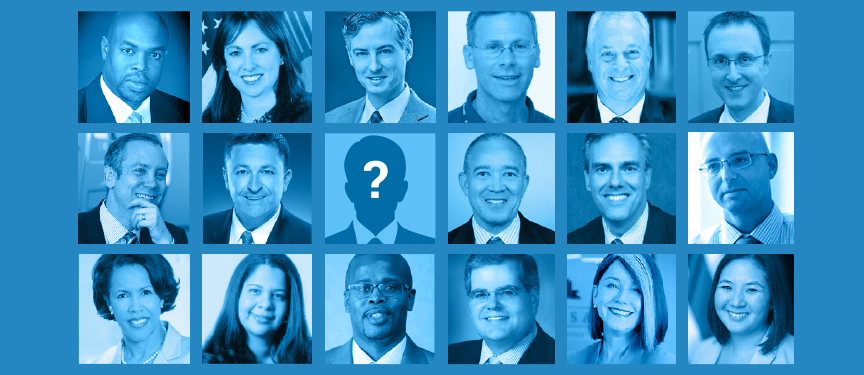WHO WE ARE
OUR BELIEFS
Chiefs for Change members share a vision that
all American children can lead fulfilling,
self-determined lives as adults.
We therefore are dissatisfied with an education system in which low-income students have less than a 10% chance of receiving an associate or bachelor’s degree. We believe that in every case access to excellence is access to opportunity. It is a daily fact in our country that historically disadvantaged students do not have regular or fair access to high-achieving schools, fully prepared and supported teachers, challenging curriculum and affordable pathways to college and meaningful careers. We are committed to changing this status quo, opening as many doors to opportunity as we can, as fast as we can, for every child.
 Read more: Chiefs for Change CEO Mike Magee
Read more: Chiefs for Change CEO Mike Magee
on why bipartisan consensus matters now
ACCESS TO EXCELLENT SCHOOLS
Our north star is a system in which all students, irrespective of geography or economic means, have fair access to all schools and real pathways to college and meaningful careers.
QUALITY CURRICULUM
For generations, American school children have learned through the lens of under-examined textbooks. All students deserve a learning experience that challenges them, feels relevant to them, ignites their curiosity and prepares them for college, meaningful careers and life.
FULLY PREPARED & SUPPORTED EDUCATORS
We have the same high expectations for educators that we have for students.
ACCOUNTABILITY
You can’t aspire to excellence without defining excellence.
FREE FROM FEAR, FREE TO LEARN
America’s schools must reflect our democracy’s highest ideals.
We support:
 Clear information about school quality
Clear information about school quality Equitable access to great schools
Equitable access to great schools Fair funding for schools proportionate to the learning needs of students
Fair funding for schools proportionate to the learning needs of students
We insist on:
 Regular review of materials to ensure they teach valuable knowledge and skills
Regular review of materials to ensure they teach valuable knowledge and skills Curricula that challenge our students to be well educated thinkers with an understanding of the world and its history
Curricula that challenge our students to be well educated thinkers with an understanding of the world and its history
We believe teachers are professionals who should be:
 Prepared in the classroom setting by school-based educators
Prepared in the classroom setting by school-based educators Rewarded for the professional skills they demonstrate and the learning growth of their students
Rewarded for the professional skills they demonstrate and the learning growth of their students Afforded opportunities to advance their careers into teacher leadership roles
Afforded opportunities to advance their careers into teacher leadership roles Supported with timely, and meaningful evaluation and feedback
Supported with timely, and meaningful evaluation and feedback
We believe:
 Schools should be evaluated based on student learning, in unambiguous terms and according to standards benchmarked against those of high-performing states and countries
Schools should be evaluated based on student learning, in unambiguous terms and according to standards benchmarked against those of high-performing states and countries When these ratings show unacceptably low results for years at a time, state and district leaders must apply solutions that are proven to help students learn
When these ratings show unacceptably low results for years at a time, state and district leaders must apply solutions that are proven to help students learn
We fight to make schools:
 Safe and welcoming communities that foster informed, civil debate, teaching students to engage with different points of view
Safe and welcoming communities that foster informed, civil debate, teaching students to engage with different points of view
We work to change:
 Confusing school quality ratings
Confusing school quality ratings Students being stuck in struggling schools because of restrictive enrollment policies
Students being stuck in struggling schools because of restrictive enrollment policies Funding being steered away from the students in greatest need
Funding being steered away from the students in greatest need Skyrocketing college costs and low completion rates
Skyrocketing college costs and low completion rates
We work to change:
 Restrictions that stand between our students and the best available materials
Restrictions that stand between our students and the best available materials
We work to change:
 Outdated and bureaucratic systems of educator preparation, development, and evaluation
Outdated and bureaucratic systems of educator preparation, development, and evaluation Structures and practices that prevent all students from having access to prepared, supported, and effective teachers
Structures and practices that prevent all students from having access to prepared, supported, and effective teachers
We work to change:
 Efforts to water down the comparability of standards, the clarity of rating systems, or the research standard for intervention
Efforts to water down the comparability of standards, the clarity of rating systems, or the research standard for intervention
We reject:
 Hate and bigotry, as fear is an enemy to learning
Hate and bigotry, as fear is an enemy to learning Dogmatic or ideological approaches to learning that stifle discussion, regardless of where they fall on the political spectrum
Dogmatic or ideological approaches to learning that stifle discussion, regardless of where they fall on the political spectrum
What We're Doing
- Statement: School Choice
- Policy Spotlight: ESSA and Evidence: Why It Matters
- Policy Spotlight: Evidence and Funding: Connecting the Dots
- Policy Spotlight: From Financial Transparency to Equity
- Letter: Letter to USED on Supplemental Priorities
- Letter: CFC Comments on KY ED Charter School Regulations
What We're Doing
- Blog Post: What About Career Readiness?
- Blog Post: Leveraging Curriculum to Improve Student Learning
What We're Doing
- Policy Spotlight: ESSA Title II-A: Preparing, Training, and Recruiting High-Quality Teachers, Principals, and Other School Leaders
- Policy Spotlight: The Case for Teacher Leaders: Elevating the Teaching Profession and Sustaining Equity and Excellence
- Policy Spotlight: Diversity to the Forefront: Why It Matters + Recommendations for System-Level Leaders

